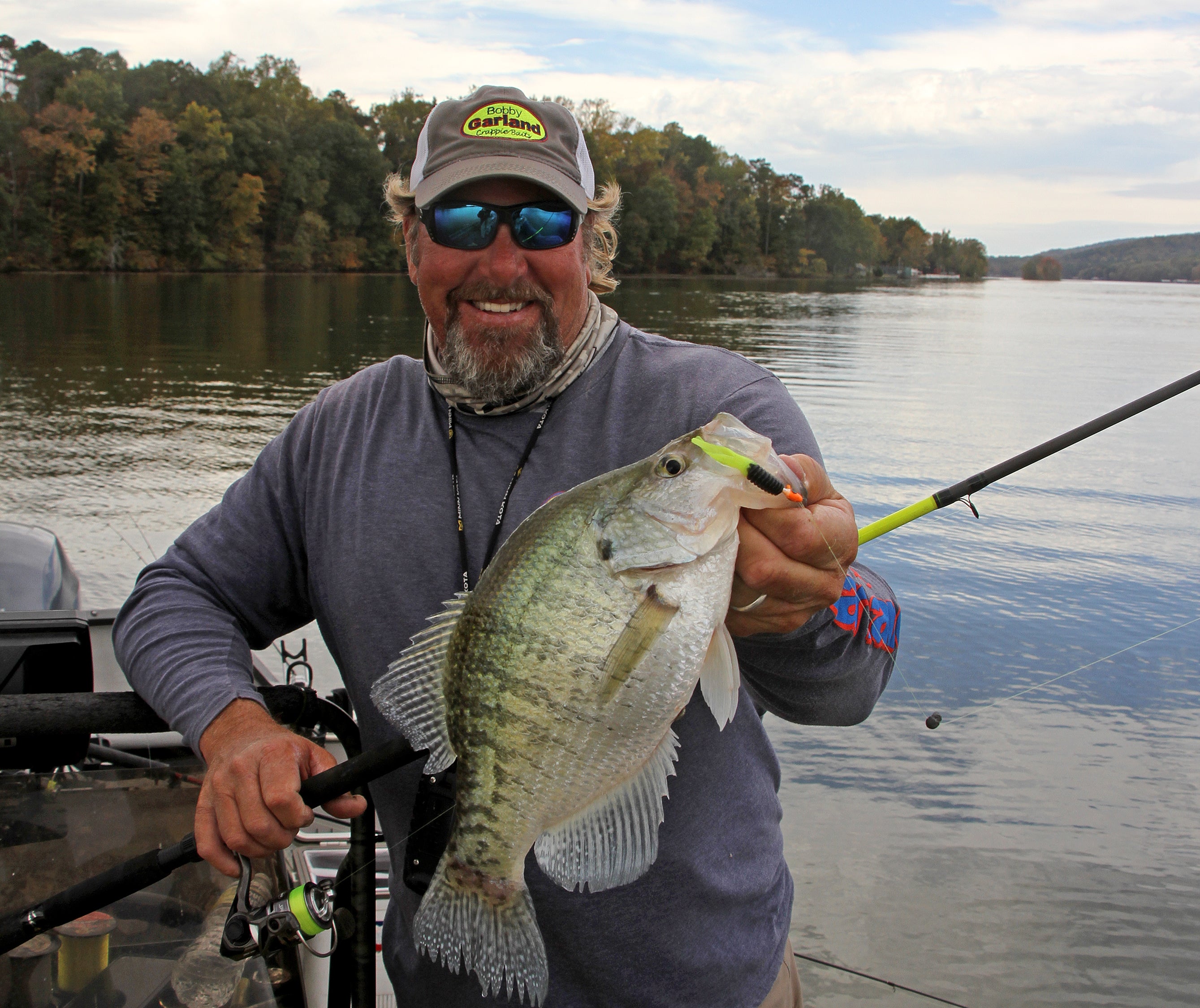By DAVID RAINER, Alabama Department of Conservation and Natural Resources
If you love to head to the woods this time of year to pursue white-tailed deer, Capt. Lee Pitts is right there with you. However, if you want to take a break from the deer stand and catch crappie on Weiss or Neely Henry reservoirs, Pitts is your man.
“If you want to catch crappie this winter, I’m ready,” Pitts said as we headed out on Neely Henry, an 11,235-acre impoundment on the Coosa River in northeast Alabama. When he’s not on Neely Henry, he’s fishing Weiss, a 30,200-acre Coosa impoundment.
“Weiss has a lot more open bays and open water,” he said. “On the days you’re dealing with wind, Neely Henry is more of a river system. In the winter, the crappie tend to get more on the ledges and creek channels in that deeper water. So, on Neely Henry, you can get protection from some of that north wind. Also, on Neely Henry, there’s a 9-inch (minimum) length limit on crappie. If you’re looking to take some fish home for the freezer, Neely Henry has great options on that. I’m not saying Neely doesn’t have big fish, because Neely has some big white and black crappie.”
The minimum length limit is 10 inches on Weiss Lake, known as the “Crappie Capital of the World.”
Pitts said finding structure is the key to catching crappie during the colder months. The guides and serious crappie anglers work with Alabama Power Company to deploy fish habitat, such as cane beds with concrete blocks.
“On these ledges, I’m looking for the brush,” he said. “On Weiss and Neely, all the guys put their own brush in. We have multiple places with cane beds. We’re putting them out off the edges of the breaks in 10 to 12 feet of water, and we’ve got some even in 18 to 20 feet of water. That gives you options if the fish have not pulled up in the shallower water. If they’re still deep, you’ve still got plenty of structure to catch these fish.”
Pitts uses a drop-shot rig with the bait deployed about 6 inches above the lead. On tough days, he’ll go to minnows, but he prefers to use a variety of crappie jigs.
“I like the Bobby Garlands, the Slab Slayers and Baby Shads,” he said of his jig choices. “With this cold water, they don’t have to move a lot to make it have action. You can just quiver that rod tip, and you still get a lot of action without moving the bait out of the strike zone. That’s what I prefer.
“In December, we’ll start doing some trolling. Even though it’s still wintertime, these fish will start migrating toward the bays. The bait starts moving toward the bays, and these fish are just following them. Some fish will stay on the ledges, but a lot of them will start moving toward the bays.”
Pitts said his trolling technique depends on where the fish are located in the water column when they start heading for the bays.
“You may be in 20 to 30 feet of water, but these fish may be suspended at 10 or 12 feet,” he said. “That’s when you have to pay close attention. I watch my Humminbird electronics all through the day so I’ll know what depth those fish are staying in. I like to use either a 1/24th (ounce) or 1/16th jig head. That seems to give it more action even at a slow speed. If I have to, instead of going to 1/8th. I’ll go with a BB or some type of split shot above the bait, so I’m still getting the depth I need, but I’ve got a bait that will dance around in the water column.”
As far as weather, Pitts prefers days with some sunshine and a light ripple on the water. When it gets windy, it makes it difficult for a proper bait presentation.
“If the front of the boat is going up and down and the rod tip is jumping around, you’re not going to be very productive,” he said. “But I’ll go fishing with whatever weather we’ve got. If you’ve got a little ripple, that’ll push those fish onto the cover instead of just roaming and that will help you with the vertical bite.”








